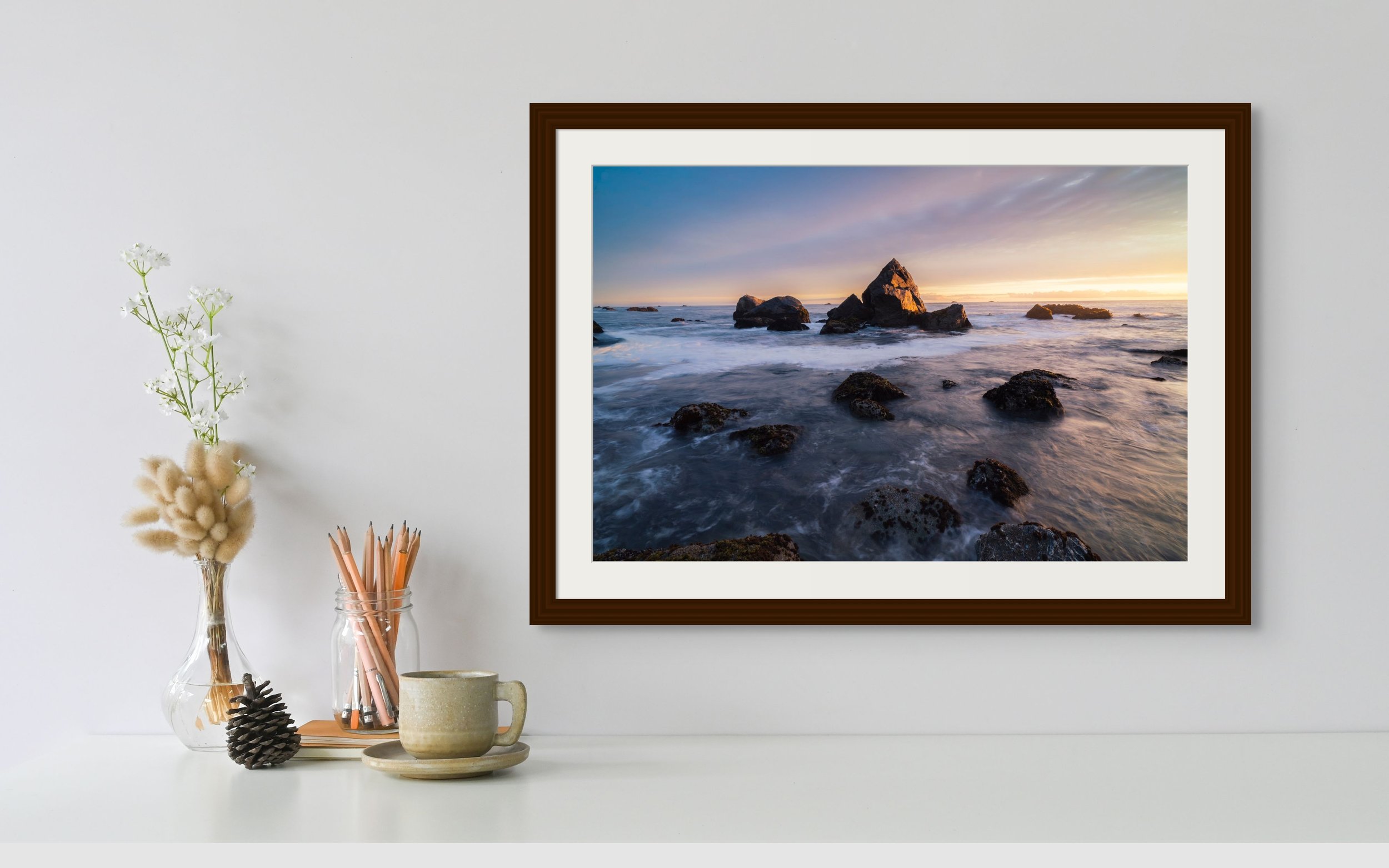Photographing Seascapes | Tips for Stunning Coastal Landscapes
Preparing for a Successful Coastal Shoot
Proper planning is essential for capturing stunning seascape photographs. First make sure to check the weather forecast, the tide times, and the sun position before heading out. You can always wing it as well and come away with stunning images but a little planning always helps. Cloudy days often provide the most dramatic light and skies for coastal photographs. Arrive at your location early to scout potential compositions and vantage points while observing how the light and conditions change.
Choosing the Right Gear
The best lens to use for photographing seascapes is a wide-angle lens to capture the vast landscape of the oceans expanse along with some interesting foreground elements. A mid-range zoom lens can also be useful for isolating subjects. If I only could pick one lens though it would be the wide-angle lens.
Bringing filters is also incredibly important for seascape photography. Neutral density (ND) filters allow you to use longer shutter speeds to blur moving water and clouds. A sturdy tripod is also a must for sharp long exposures. Having a remote trigger is also helpful but not necessary to minimize camera shake when triggering the shutter.
Photographing Seascape Compositions and Perspectives
Look for leading lines and foreground elements like rocks, driftwood, or tide patterns to anchor your compositions. Getting low with a wide angle lens can add a unique perspective to exaggerate depth. Experiment with different shutter speeds to convey the sense of motion from churning waves, flowing tides, moving clouds, and sea mist. I think that playing around with different shutter speeds is the number one factor in photographing a unique and compelling seascape image. The best time of day to photograph seascapes is dawn and dusk when the warm light beautifully illuminates the coastline. Rainy and foggy conditions also provide some opportunities for rare photographs.
Final Thoughts on Seascape Photography
Seascape photography allows you to capture the ever-changing beauty and power of where the land meets the sea. It requires patience, an eye for compelling compositions, and willingness to adapt to the dynamic lighting and weather conditions. Don't be discouraged if your first attempts don't produce portfolio-worthy shots - it takes time and practice to become a master. Just get out there and find what you like and what works for you!
Photograph taken in Sue Meg State Park, California



